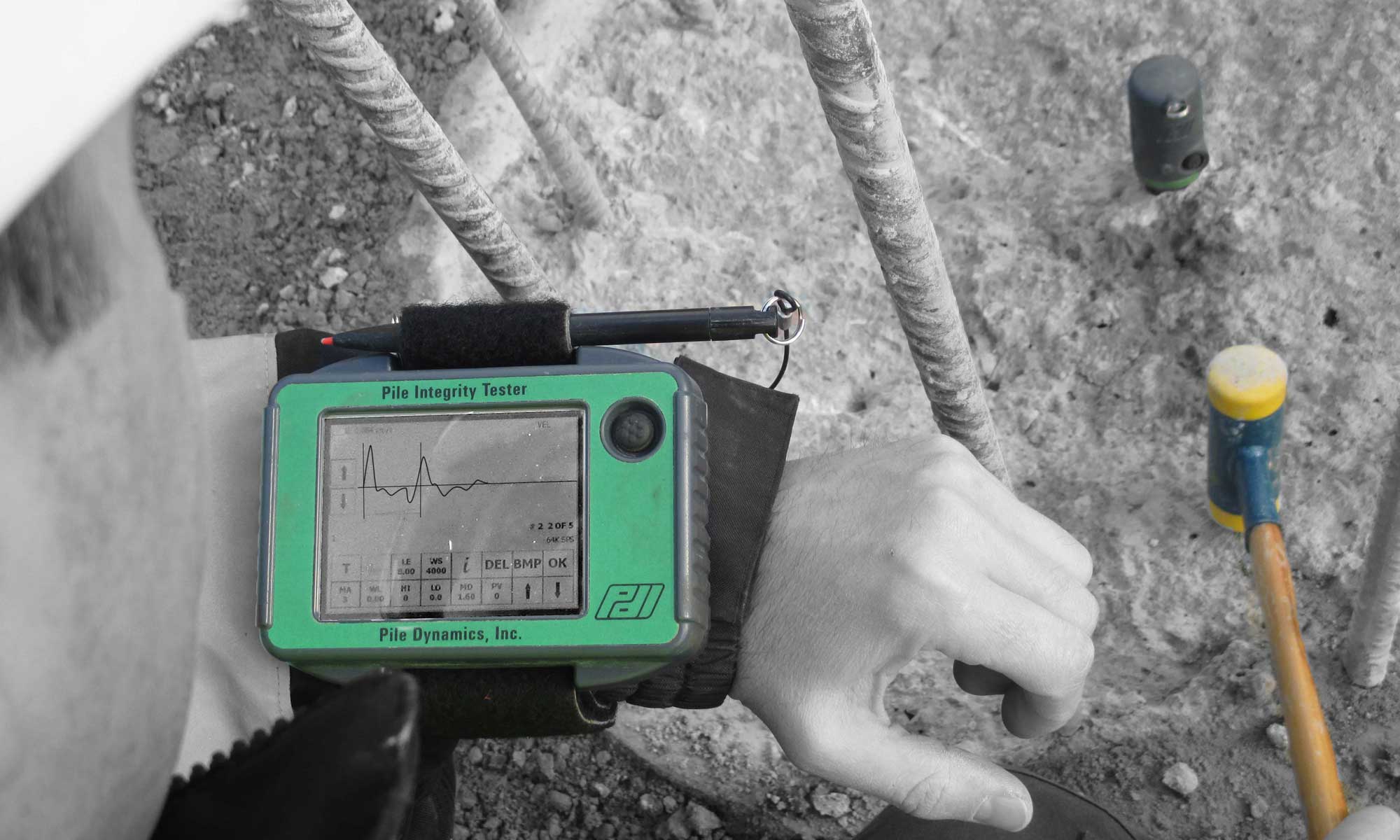Pulse echo integrity testing (also called low strain dynamic test, sonic echo test, or low strain integrity test) can be carried out on any type of concrete foundation-piles (e.g drilled piles, auger cast piles, mixed in place vibro concrete columns, bored diaphragm walls, etc.)
The test is not only suitable for quality assurance of new deep foundations but also to inspect the serviceability and length of existing piles under pile head beams or other constructions.
Measuring Method
An impact wave is induced into the pile trough a blow of a light, hand-held hammer. The echo of the pile toe and thus the pile length can be determined by the measurement of the movements at the pile top. The wave speed c, a measure of the concrete quality arises from pile length L and travel time T.
Changes in pile properties – such as a reduction in diameter or material properties, voids in concrete, soil inclusion and cracks – produce wave reflections. The depth of the defect arises from the measured travel time of the wave the strength of the defect from the intensity of the reflected signal.
Measuring Equipment
GSP uses the powerful measuring instrument Pile Integrity TesterTM (PIT) by Pile Dynamics, Inc. for pile integrity testing. You can receive more information about the measuring instrument directly at www.pile.com.
Special Case: Impact Echo Analysis
With the impact echo analysis components and building materials can be tested by impulse initiation. Due to the vibrational behaviour of the components their integrity can be determined. Loading a structure by a hammer blow in general is well known. The use of advanced measuring technology allows a refined analysis in frequency or time domain. From such measurements grade registers for concrete components, masonry, wooden beams or also steel frameworks can be generated. With the impact echo analysis in particular the thickness of only unilaterally accessible concrete slabs (raft foundations) can be determined.


